Homeownership Aspirations: The Enduring & Evolving American Dream
Almost all respondents (94 percent) said that if money were no object, they would own their home, and detached single-family homes are idealized among all age groups.
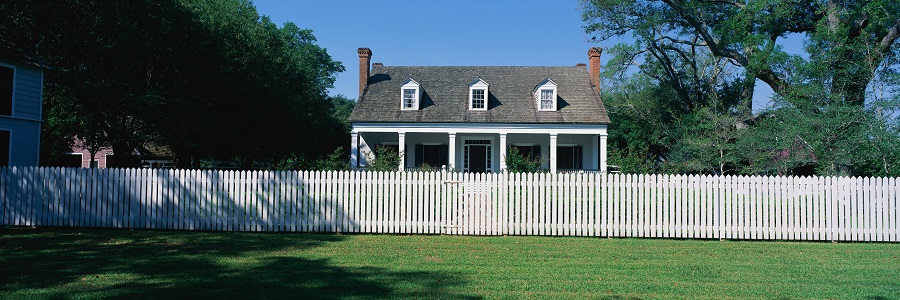
Almost all respondents (94 percent) said that if money were no object, they would own their home, and detached single-family homes are idealized among all age groups.

The idyllic, picket-fenced, detached, single-family home in the suburbs remains a mainstream standard of what homeownership should look like. But around the edges, the image of the ideal American home is beginning to evolve, if only slightly. Especially for younger Americans.
A decade after the 2008 housing crash and subsequent financial crisis, the draw of homeownership remains powerful for Americans of all ages, according to the most recent Zillow Housing Aspirations Report.
Roughly two-thirds (64 percent) of Americans in 20 metros agreed that owning a home is a “key to a higher social status” and “necessary to live The American Dream.” Even more (70 percent) agreed that homeownership “increases your standing in the local community.”
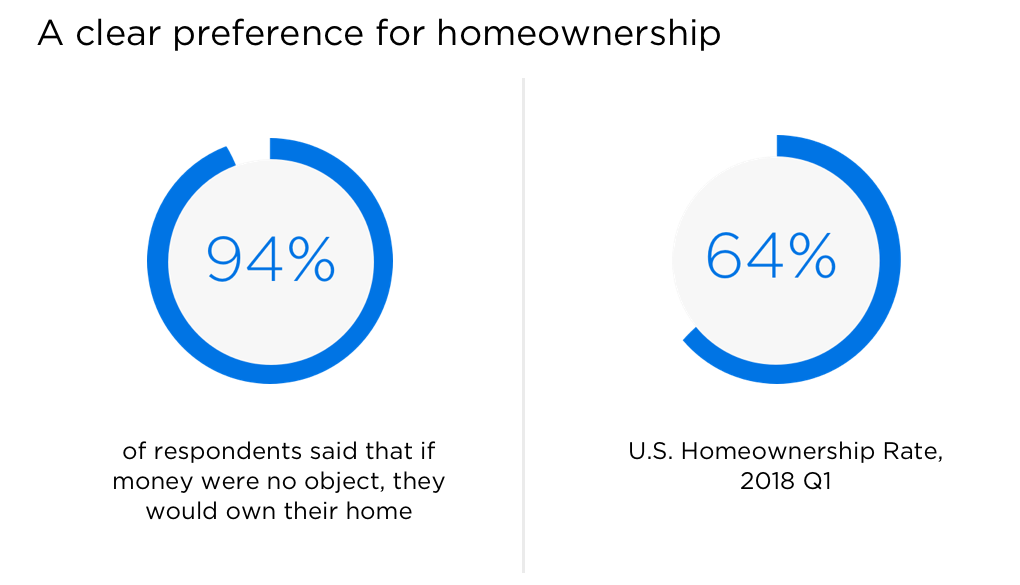

Almost all respondents (94 percent) said that if money were no object, they would own their home – and the feeling is widespread across the country. At least 90 percent of respondents from each of the 20 metros surveyed said they would own a home if money were no object. But there are some subtle shifts among younger adults:
Of course, given that the U.S. homeownership rate is currently around 64 percent, money is clearly an object for many would-be homeowners that are currently renting.
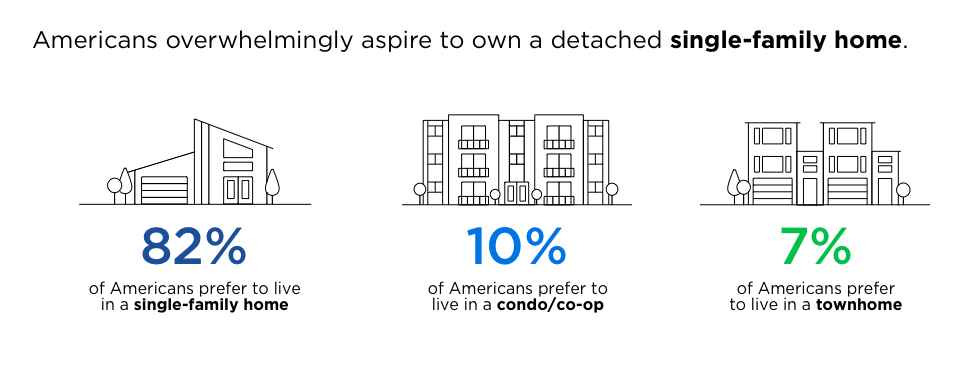

But again, while detached single-family homes are idealized among all age groups, young adults are slightly more likely to indicate a different preference: 9 percent said they’d choose an attached single-family home compared to 5 percent and 6 percent of middle-aged and older adults, respectively.
Detached single-family homes are most-often idealized in Denver, Seattle and St. Louis with more than 85 percent of respondents in each market identifying it as their ideal housing type while respondents in Chicago, New York and Minneapolis are most likely to identify attached single-family houses as their ideal housing type (upward of 9 percent in all three markets).
But while the large majority of respondents from all 20 markets said they preferred detached single-family homes, in certain areas there was a meaningful share more willing to embrace denser living arrangements: In New York, Miami, Chicago and Tampa, 12 percent or more of respondents identified condos/co-ops/apartments as their ideal housing type (in New York it was 21 percent).
Despite suspicions of changing attitudes toward urban versus suburban living, a majority of Americans (56 percent) would prefer to live in the suburbs – even among stereotypically city-loving young adults under age 35, 52 percent of whom said their ideal home is in the suburbs.
People’s preferences varied by metro area:
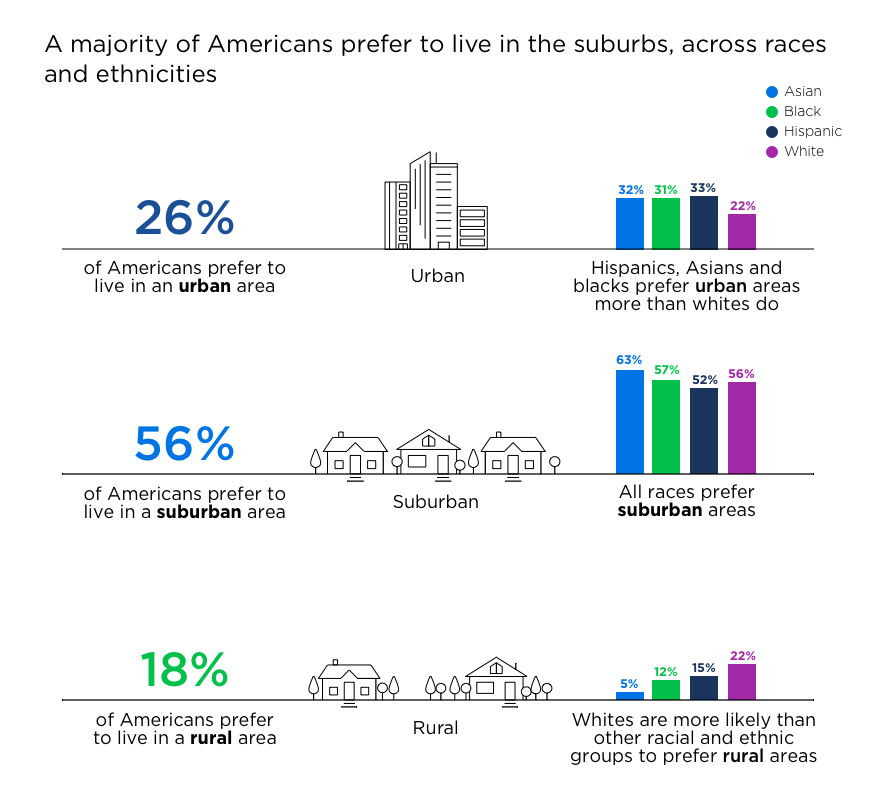

Transportation plays a major role in where people want to live as well.
Young adults were more likely to say their ideal home is close to public transit – 35 percent, compared to 28 percent of middle-aged adults and 25 percent of older adults – although more young adults (37 percent) still said they prefer highway access. In that age group, Asians and blacks were somewhat more likely to value access to public transit (45 percent and 40 percent, respectively) than Hispanics and Whites (33 percent and 32 percent, respectively).
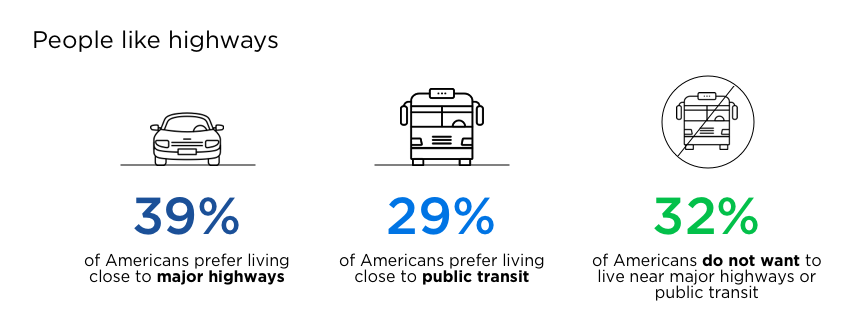

Overall, the data present a portrait of an enduring, if evolving, American Dream.
Owning a single-family home in the suburbs with good highway access remains the most common idealized housing situation for Americans in the 20 metros surveyed. But young adults do have slightly different preferences: They are ever-so-slightly more likely to prefer renting, living in townhouses or rowhomes, urban communities and good access to public transit. It remains to be seen if these preferences will endure as today’s young adults age.